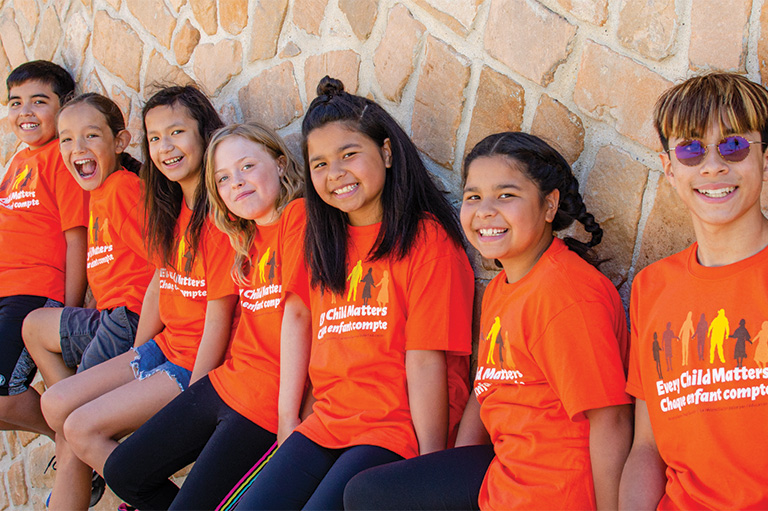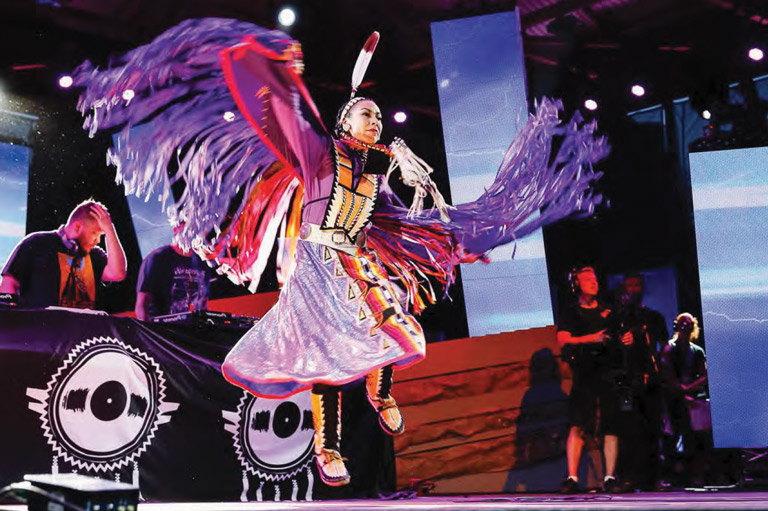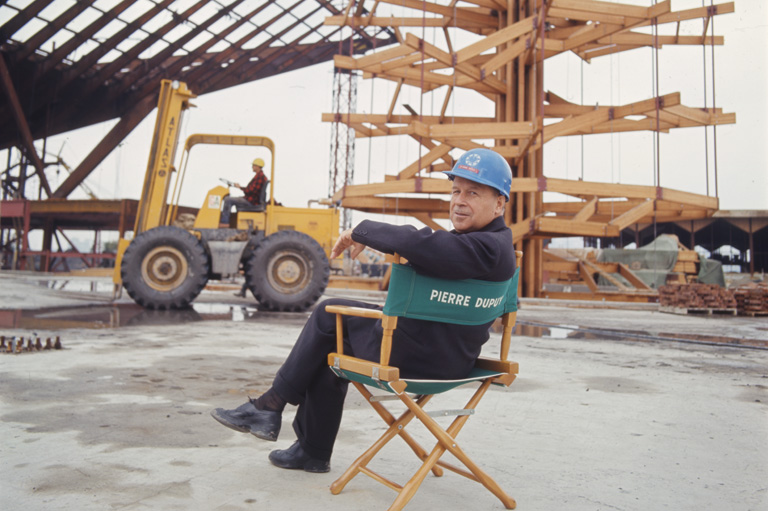Gibaajimominaan: Our Stories
Grade Levels: 7/8, 9
Subject Area: Social Studies/History/Indigenous Studies
Lesson Overview
In this lesson students listen to a residential school Survivor* tell their story, respond with a personal comment or question, link the Survivor’s experiences with the Seven Sacred Teachings, and consider what they can do to support the Survivors and their families. (*Students may opt to personally interview a Survivor)
Time Required
One to three periods.
Historical Thinking Concepts
- Identify continuity and change
- Analyze cause and consequence
- Take historical perspectives
- Understand the ethical dimension of historical interpretations.
Learning Outcomes
Student will:
- Explore the history of residential schools in Canada.
- Identify historical sources used to study residential schools.
- Engage with a residential school Survivor testimony.
- Value the importance of Survivor testimony/lived experience.
- Appreciate Indigenous knowledge systems, using the Seven Sacred Teachings as a lens.
Background
Gibaajimominaan means ‘our stories’ in Anishinaabe.
The Lesson Activity
Part 1:
- Familiarize yourself with Guidelines for Learning from Residential School Survivors: Strategies for Teachers at the end of this lesson before beginning the learning activity.
- Provide an overview of residential schools in Canada. Incorporate maps, images, etc.
- Encourage questions; invite dialogue
Part 2:
- Divide the class into table groups. Distribute Kitayánán: We are Still Here.
- Facilitate a small group reading activity.
- Check for understanding. Ask: what types of sources can we use to learn about student experiences in residential schools? Capture responses on whiteboard/flipchart.
- Encourage questions; invite dialogue.
- Pay special attention to Survivor lived experiences and personal testimonials.
- Distribute Learning and Listening with Respect. Read over with the class.
- Engage students with a Survivor’s personal story. You may access stories here, invite a Survivor to class, have students interview a Survivor; or listen to a Survivor speak during the Every Child Matters virtual event.
- Encourage questions; invite dialogue.
- Make time for student introspection.
Part 3:
- Introduce the concept of Indigenous knowledge by sharing the definition provided by the United Nations Educational, Scientific, and Cultural Organization (UNESCO):
Local and indigenous knowledge refers to the understandings, skills and philosophies developed by societies with long histories of interaction with their natural surroundings. For rural and indigenous peoples, local knowledge informs decision-making about fundamental aspects of day-to-day life.
This knowledge is integral to a cultural complex that also encompasses language, systems of classification, resource use practices, social interactions, ritual and spirituality.
These unique ways of knowing are important facets of the world’s cultural diversity, and provide a foundation for locally-appropriate sustainable development.
- Explain that different Indigenous nations throughout Canada and the world will have different knowledge systems. Provide an overview of the Seven Sacred Teachings, which is a set of teachings that are common to many Indigenous groups in Canada. [There are many versions of these seven teachings which are sometimes referred to as the Seven Grandmother Teachings or the Seven Sacred Teachings. Nations and communities may use differing stories to impart these teachings, but the same guiding principles and morals can be found in all.]
- Distribute Gibaajimominaan: Our Stories. Instruct the students to complete.
- Guide and assist as necessary.
Materials/Resources
- Access to Internet, including video and audio capabilities (optional)
- Guidelines for Learning from Residential School Survivors: Strategies for Teachers
- Learning and Listening with Respect Student Resource – copies as needed
- Kitayánán: We are Still Here Student Resource – copies as needed
- Gibaajimominaan: Our Stories Student Resource – one copy per student
References/Further Resources:
“Residential School Survivor Stories,” Legacy of Hope
“Residential Schools in Canada,” The Canadian Encyclopedia
“Seven Grandfather Teachings,” Our Stories: First Peoples of Canada
National Student Memorial Register Book, National Centre for Truth and Reconciliation
Extension Activity
Extension activity for grades 4-9:
Using Objects to Tell the Story of Residential Schools
- Introduce ‘The Witness Blanket’ to students by exploring the website http://witnessblanket.ca/blanket/
- Click on the objects
- Facilitate a class discussion
- Explain how a curator pieces carefully selected objects together to represent a story.
- Introduce the steps of curator:
1. The curator selects objects that represent the topic they are sharing.
2. The objects together must represent a story.
3. All of those stories together must represent an overall coherent narrative.
4. The objects must fit within a defined space
Have students design an exhibit dedicated to the history and legacy of residential schools in your class. Encourage students to bring items from home, items from school, etc.
There's more!
Themes associated with this article
Advertisement








